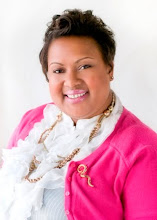I am a creature of habit, of loyalty. There are things I like to be spontaneous about: travel, activities and hairstyles. Yet, there are other circumstances where I prefer to lock my feet in the cement: primary care physician, mechanic, Cottonelle toilet paper. It was hard for me to leave my pediatrician. I was around the age of 25 when I knew it was time. There I was sitting in Dr. Regina Kruczynska’s office surrounded by children playing with blocks and watching videos. The nurse opened the door and said, “Natasha Clark,” and I was embarrassed as I rose to meet her at the door. I told this to Dr. Kruczynska when I entered and she told me not to worry. She had patients that were approaching 30. I had been her patient since I was 7. She knew my history, my parents and my son. (That was the kicker! Shaun was her patient, too. And if he had an appointment and I wasn’t feeling well, I could get a twofer and ask her to check me out, as well.) It hurt, but I eventually found a new physician.
As entrepreneurs, we should constantly be thinking about keeping our clients coming back for more. Walt Disney said, “Do what you do so well that they will want to see it again and bring their friends.” It doesn’t matter what line of work you’re in, you need and want them to come back. If you’re an author, you want them to buy the sequel. If you’re the president of UCONN, you want that student to return for the master’s degree.
“Recent estimates put each person's circle of influence at between 50 and 300 people. Imagine the time it would take a sales rep to generate 300 potential prospects," says Jay Lipe, author of The Marketing Toolkit for Growing Businesses. "Yet by connecting with a repeat customer, and finding ways for them to communicate with their circle of influence about your company, you've just expanded your sales force, without incurring additional overhead."
I can’t write on this topic and not mention Randy Pausch. He learned that he had pancreatic cancer in September 2006, and in August 2007 he was given a terminal diagnosis: "3 to 6 months of good health left". He gave an upbeat lecture titled "The Last Lecture: Really Achieving Your Childhood Dreams" on September 18, 2007 at Carnegie Mellon, which became a popular YouTube video and led to other media appearances. He then co-authored a book called The Last Lecture on the same theme, which became a New York Times best-seller.
 |
| A fence dedicated to Randy Pausch at Carnegie Mellon. |
Pausch died of complications from pancreatic cancer on July 25, 2008. In his fantastic book, he tells readers about the $100,000 salt and pepper shaker Disney World sold. As a kid, Randy was at Disney World with his family and he and his sister decided they wanted to show their parents their appreciation for the trip. They pooled their allowance and purchased a ceramic Disney salt and pepper shaker.
However, Randy accidentally drops the shaker and it breaks. A nearby adult suggests they take it back to the store. To their surprise, the Disney employee who had sold them the items apologized for not wrapping them appropriately and gave them a new set, no questions asked.
As an adult, by Randy's calculations, over the years his family has spent over $100,000 with the Disney brand over the years because they never forgot the symbolic importance of that one specific interaction. In later years as a consultant, Randy asked Disney executives this question: "If I sent a child into one of your stores with a broken salt and pepper shaker today, would your policies allow your workers to be kind enough to replace it?" Randy said, "the executives squirm at the question. They know the answer: Probably not."
Good service can yield remarkable results. Disney profited 100 times over because of good service, not a fantastic salt and pepper shaker. Delivering quality service is just as important as the quality product.
What are some of the things that spark your loyalty?






No comments:
Post a Comment